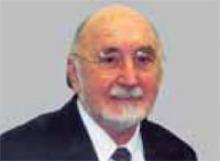Clinical challenge: Not to withhold HRT, but to identify women at risk
As clinicians, we must strive not to deny HRT to women who could safely benefit from it, but to develop cost-effective strategies to differentiate healthy women from those with metabolic dysfunction (e.g., premammographic breast cancer) and asymptomatic latent disease (e.g., silent atherogenesis). “Normal” women will benefit from selective HRT; the latter require medications specific to their underlying disorder.
In the aftermath of the WHI, the scope of the HRT problem has been overblown. When the absolute-risk numbers for HRT-related cardiovascular disease and breast cancer are extrapolated to the nation, the perceived size of the problem—which is only a mathematical projection and estimate—can assume troubling proportions. But physicians in clinical practice have only 1 responsibility: ensuring the health and well-being of their patients, 1 at a time. Thus, the question of HRT must be resolved between the physician and the patient. This takes time—time to talk with, examine, and test the patient; time to think through the problem; and time to prescribe and educate the patient regarding her therapeutic needs. This is time well spent.
FIGURE Female life span: Window of opportunity for hormone therapy*
Dr. Notelovitz reports no financial arrangements or affiliations with any of the companies that manufacture products mentioned in this article or their competitors.




